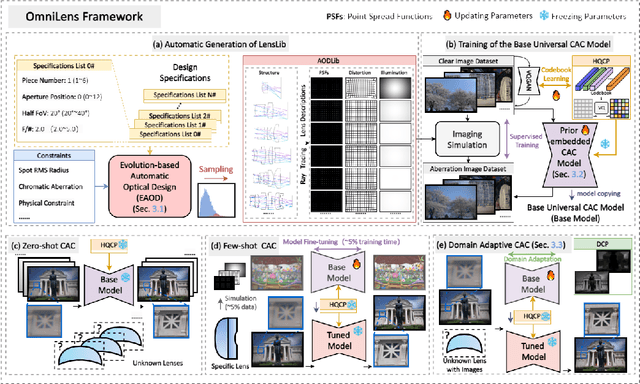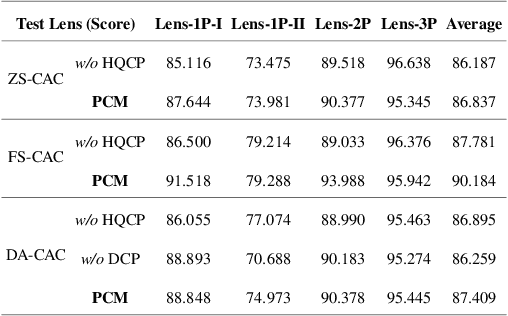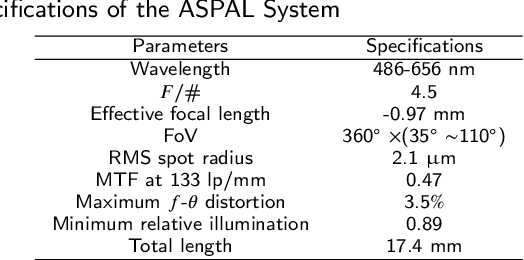Qi Jiang
Nondeterministic Polynomial-time Problem Challenge: An Ever-Scaling Reasoning Benchmark for LLMs
Apr 15, 2025Abstract:Reasoning is the fundamental capability of large language models (LLMs). Due to the rapid progress of LLMs, there are two main issues of current benchmarks: i) these benchmarks can be crushed in a short time (less than 1 year), and ii) these benchmarks may be easily hacked. To handle these issues, we propose the ever-scalingness for building the benchmarks which are uncrushable, unhackable, auto-verifiable and general. This paper presents Nondeterministic Polynomial-time Problem Challenge (NPPC), an ever-scaling reasoning benchmark for LLMs. Specifically, the NPPC has three main modules: i) npgym, which provides a unified interface of 25 well-known NP-complete problems and can generate any number of instances with any levels of complexities, ii) npsolver: which provides a unified interface to evaluate the problem instances with both online and offline models via APIs and local deployments, respectively, and iii) npeval: which provides the comprehensive and ready-to-use tools to analyze the performances of LLMs over different problems, the number of tokens, the aha moments, the reasoning errors and the solution errors. Extensive experiments over widely-used LLMs demonstrate: i) NPPC can successfully decrease the performances of advanced LLMs' performances to below 10%, demonstrating that NPPC is uncrushable, ii) DeepSeek-R1, Claude-3.7-Sonnet, and o1/o3-mini are the most powerful LLMs, where DeepSeek-R1 outperforms Claude-3.7-Sonnet and o1/o3-mini in most NP-complete problems considered, and iii) the numbers of tokens, aha moments in the advanced LLMs, e.g., Claude-3.7-Sonnet and DeepSeek-R1, are observed first to increase and then decrease when the problem instances become more and more difficult. We believe that NPPC is the first ever-scaling reasoning benchmark, serving as the uncrushable and unhackable testbed for LLMs toward artificial general intelligence (AGI).
DexGrasp Anything: Towards Universal Robotic Dexterous Grasping with Physics Awareness
Mar 11, 2025



Abstract:A dexterous hand capable of grasping any object is essential for the development of general-purpose embodied intelligent robots. However, due to the high degree of freedom in dexterous hands and the vast diversity of objects, generating high-quality, usable grasping poses in a robust manner is a significant challenge. In this paper, we introduce DexGrasp Anything, a method that effectively integrates physical constraints into both the training and sampling phases of a diffusion-based generative model, achieving state-of-the-art performance across nearly all open datasets. Additionally, we present a new dexterous grasping dataset containing over 3.4 million diverse grasping poses for more than 15k different objects, demonstrating its potential to advance universal dexterous grasping. The code of our method and our dataset will be publicly released soon.
Benchmarking the Robustness of Optical Flow Estimation to Corruptions
Nov 22, 2024



Abstract:Optical flow estimation is extensively used in autonomous driving and video editing. While existing models demonstrate state-of-the-art performance across various benchmarks, the robustness of these methods has been infrequently investigated. Despite some research focusing on the robustness of optical flow models against adversarial attacks, there has been a lack of studies investigating their robustness to common corruptions. Taking into account the unique temporal characteristics of optical flow, we introduce 7 temporal corruptions specifically designed for benchmarking the robustness of optical flow models, in addition to 17 classical single-image corruptions, in which advanced PSF Blur simulation method is performed. Two robustness benchmarks, KITTI-FC and GoPro-FC, are subsequently established as the first corruption robustness benchmark for optical flow estimation, with Out-Of-Domain (OOD) and In-Domain (ID) settings to facilitate comprehensive studies. Robustness metrics, Corruption Robustness Error (CRE), Corruption Robustness Error ratio (CREr), and Relative Corruption Robustness Error (RCRE) are further introduced to quantify the optical flow estimation robustness. 29 model variants from 15 optical flow methods are evaluated, yielding 10 intriguing observations, such as 1) the absolute robustness of the model is heavily dependent on the estimation performance; 2) the corruptions that diminish local information are more serious than that reduce visual effects. We also give suggestions for the design and application of optical flow models. We anticipate that our benchmark will serve as a foundational resource for advancing research in robust optical flow estimation. The benchmarks and source code will be released at https://github.com/ZhonghuaYi/optical_flow_robustness_benchmark.
EI-Nexus: Towards Unmediated and Flexible Inter-Modality Local Feature Extraction and Matching for Event-Image Data
Oct 29, 2024



Abstract:Event cameras, with high temporal resolution and high dynamic range, have limited research on the inter-modality local feature extraction and matching of event-image data. We propose EI-Nexus, an unmediated and flexible framework that integrates two modality-specific keypoint extractors and a feature matcher. To achieve keypoint extraction across viewpoint and modality changes, we bring Local Feature Distillation (LFD), which transfers the viewpoint consistency from a well-learned image extractor to the event extractor, ensuring robust feature correspondence. Furthermore, with the help of Context Aggregation (CA), a remarkable enhancement is observed in feature matching. We further establish the first two inter-modality feature matching benchmarks, MVSEC-RPE and EC-RPE, to assess relative pose estimation on event-image data. Our approach outperforms traditional methods that rely on explicit modal transformation, offering more unmediated and adaptable feature extraction and matching, achieving better keypoint similarity and state-of-the-art results on the MVSEC-RPE and EC-RPE benchmarks. The source code and benchmarks will be made publicly available at https://github.com/ZhonghuaYi/EI-Nexus_official.
EEPNet: Efficient Edge Pixel-based Matching Network for Cross-Modal Dynamic Registration between LiDAR and Camera
Sep 28, 2024Abstract:Multisensor fusion is essential for autonomous vehicles to accurately perceive, analyze, and plan their trajectories within complex environments. This typically involves the integration of data from LiDAR sensors and cameras, which necessitates high-precision and real-time registration. Current methods for registering LiDAR point clouds with images face significant challenges due to inherent modality differences and computational overhead. To address these issues, we propose EEPNet, an advanced network that leverages reflectance maps obtained from point cloud projections to enhance registration accuracy. The introduction of point cloud projections substantially mitigates cross-modality differences at the network input level, while the inclusion of reflectance data improves performance in scenarios with limited spatial information of point cloud within the camera's field of view. Furthermore, by employing edge pixels for feature matching and incorporating an efficient matching optimization layer, EEPNet markedly accelerates real-time registration tasks. Experimental validation demonstrates that EEPNet achieves superior accuracy and efficiency compared to state-of-the-art methods. Our contributions offer significant advancements in autonomous perception systems, paving the way for robust and efficient sensor fusion in real-world applications.
Towards Single-Lens Controllable Depth-of-Field Imaging via All-in-Focus Aberration Correction and Monocular Depth Estimation
Sep 15, 2024



Abstract:Controllable Depth-of-Field (DoF) imaging commonly produces amazing visual effects based on heavy and expensive high-end lenses. However, confronted with the increasing demand for mobile scenarios, it is desirable to achieve a lightweight solution with Minimalist Optical Systems (MOS). This work centers around two major limitations of MOS, i.e., the severe optical aberrations and uncontrollable DoF, for achieving single-lens controllable DoF imaging via computational methods. A Depth-aware Controllable DoF Imaging (DCDI) framework is proposed equipped with All-in-Focus (AiF) aberration correction and monocular depth estimation, where the recovered image and corresponding depth map are utilized to produce imaging results under diverse DoFs of any high-end lens via patch-wise convolution. To address the depth-varying optical degradation, we introduce a Depth-aware Degradation-adaptive Training (DA2T) scheme. At the dataset level, a Depth-aware Aberration MOS (DAMOS) dataset is established based on the simulation of Point Spread Functions (PSFs) under different object distances. Additionally, we design two plug-and-play depth-aware mechanisms to embed depth information into the aberration image recovery for better tackling depth-aware degradation. Furthermore, we propose a storage-efficient Omni-Lens-Field model to represent the 4D PSF library of various lenses. With the predicted depth map, recovered image, and depth-aware PSF map inferred by Omni-Lens-Field, single-lens controllable DoF imaging is achieved. Comprehensive experimental results demonstrate that the proposed framework enhances the recovery performance, and attains impressive single-lens controllable DoF imaging results, providing a seminal baseline for this field. The source code and the established dataset will be publicly available at https://github.com/XiaolongQian/DCDI.
A Flexible Framework for Universal Computational Aberration Correction via Automatic Lens Library Generation and Domain Adaptation
Sep 09, 2024



Abstract:Emerging universal Computational Aberration Correction (CAC) paradigms provide an inspiring solution to light-weight and high-quality imaging without repeated data preparation and model training to accommodate new lens designs. However, the training databases in these approaches, i.e., the lens libraries (LensLibs), suffer from their limited coverage of real-world aberration behaviors. In this work, we set up an OmniLens framework for universal CAC, considering both the generalization ability and flexibility. OmniLens extends the idea of universal CAC to a broader concept, where a base model is trained for three cases, including zero-shot CAC with the pre-trained model, few-shot CAC with a little lens-specific data for fine-tuning, and domain adaptive CAC using domain adaptation for lens-descriptions-unknown lens. In terms of OmniLens's data foundation, we first propose an Evolution-based Automatic Optical Design (EAOD) pipeline to construct LensLib automatically, coined AODLib, whose diversity is enriched by an evolution framework, with comprehensive constraints and a hybrid optimization strategy for achieving realistic aberration behaviors. For network design, we introduce the guidance of high-quality codebook priors to facilitate zero-shot CAC and few-shot CAC, which enhances the model's generalization ability, while also boosting its convergence in a few-shot case. Furthermore, based on the statistical observation of dark channel priors in optical degradation, we design an unsupervised regularization term to adapt the base model to the target descriptions-unknown lens using its aberration images without ground truth. We validate OmniLens on 4 manually designed low-end lenses with various structures and aberration behaviors. Remarkably, the base model trained on AODLib exhibits strong generalization capabilities, achieving 97% of the lens-specific performance in a zero-shot setting.
Design, analysis, and manufacturing of a glass-plastic hybrid minimalist aspheric panoramic annular lens
May 05, 2024



Abstract:We propose a high-performance glass-plastic hybrid minimalist aspheric panoramic annular lens (ASPAL) to solve several major limitations of the traditional panoramic annular lens (PAL), such as large size, high weight, and complex system. The field of view (FoV) of the ASPAL is 360{\deg}x(35{\deg}~110{\deg}) and the imaging quality is close to the diffraction limit. This large FoV ASPAL is composed of only 4 lenses. Moreover, we establish a physical structure model of PAL using the ray tracing method and study the influence of its physical parameters on compactness ratio. In addition, for the evaluation of local tolerances of annular surfaces, we propose a tolerance analysis method suitable for ASPAL. This analytical method can effectively analyze surface irregularities on annular surfaces and provide clear guidance on manufacturing tolerances for ASPAL. Benefiting from high-precision glass molding and injection molding aspheric lens manufacturing techniques, we finally manufactured 20 ASPALs in small batches. The weight of an ASPAL prototype is only 8.5 g. Our framework provides promising insights for the application of panoramic systems in space and weight-constrained environmental sensing scenarios such as intelligent security, micro-UAVs, and micro-robots.
Global Search Optics: Automatically Exploring Optimal Solutions to Compact Computational Imaging Systems
Apr 30, 2024



Abstract:The popularity of mobile vision creates a demand for advanced compact computational imaging systems, which call for the development of both a lightweight optical system and an effective image reconstruction model. Recently, joint design pipelines come to the research forefront, where the two significant components are simultaneously optimized via data-driven learning to realize the optimal system design. However, the effectiveness of these designs largely depends on the initial setup of the optical system, complicated by a non-convex solution space that impedes reaching a globally optimal solution. In this work, we present Global Search Optics (GSO) to automatically design compact computational imaging systems through two parts: (i) Fused Optimization Method for Automatic Optical Design (OptiFusion), which searches for diverse initial optical systems under certain design specifications; and (ii) Efficient Physic-aware Joint Optimization (EPJO), which conducts parallel joint optimization of initial optical systems and image reconstruction networks with the consideration of physical constraints, culminating in the selection of the optimal solution. Extensive experimental results on the design of three-piece (3P) sphere computational imaging systems illustrate that the GSO serves as a transformative end-to-end lens design paradigm for superior global optimal structure searching ability, which provides compact computational imaging systems with higher imaging quality compared to traditional methods. The source code will be made publicly available at https://github.com/wumengshenyou/GSO.
Real-World Computational Aberration Correction via Quantized Domain-Mixing Representation
Mar 15, 2024Abstract:Relying on paired synthetic data, existing learning-based Computational Aberration Correction (CAC) methods are confronted with the intricate and multifaceted synthetic-to-real domain gap, which leads to suboptimal performance in real-world applications. In this paper, in contrast to improving the simulation pipeline, we deliver a novel insight into real-world CAC from the perspective of Unsupervised Domain Adaptation (UDA). By incorporating readily accessible unpaired real-world data into training, we formalize the Domain Adaptive CAC (DACAC) task, and then introduce a comprehensive Real-world aberrated images (Realab) dataset to benchmark it. The setup task presents a formidable challenge due to the intricacy of understanding the target aberration domain. To this intent, we propose a novel Quntized Domain-Mixing Representation (QDMR) framework as a potent solution to the issue. QDMR adapts the CAC model to the target domain from three key aspects: (1) reconstructing aberrated images of both domains by a VQGAN to learn a Domain-Mixing Codebook (DMC) which characterizes the degradation-aware priors; (2) modulating the deep features in CAC model with DMC to transfer the target domain knowledge; and (3) leveraging the trained VQGAN to generate pseudo target aberrated images from the source ones for convincing target domain supervision. Extensive experiments on both synthetic and real-world benchmarks reveal that the models with QDMR consistently surpass the competitive methods in mitigating the synthetic-to-real gap, which produces visually pleasant real-world CAC results with fewer artifacts. Codes and datasets will be made publicly available.
 Add to Chrome
Add to Chrome Add to Firefox
Add to Firefox Add to Edge
Add to Edge